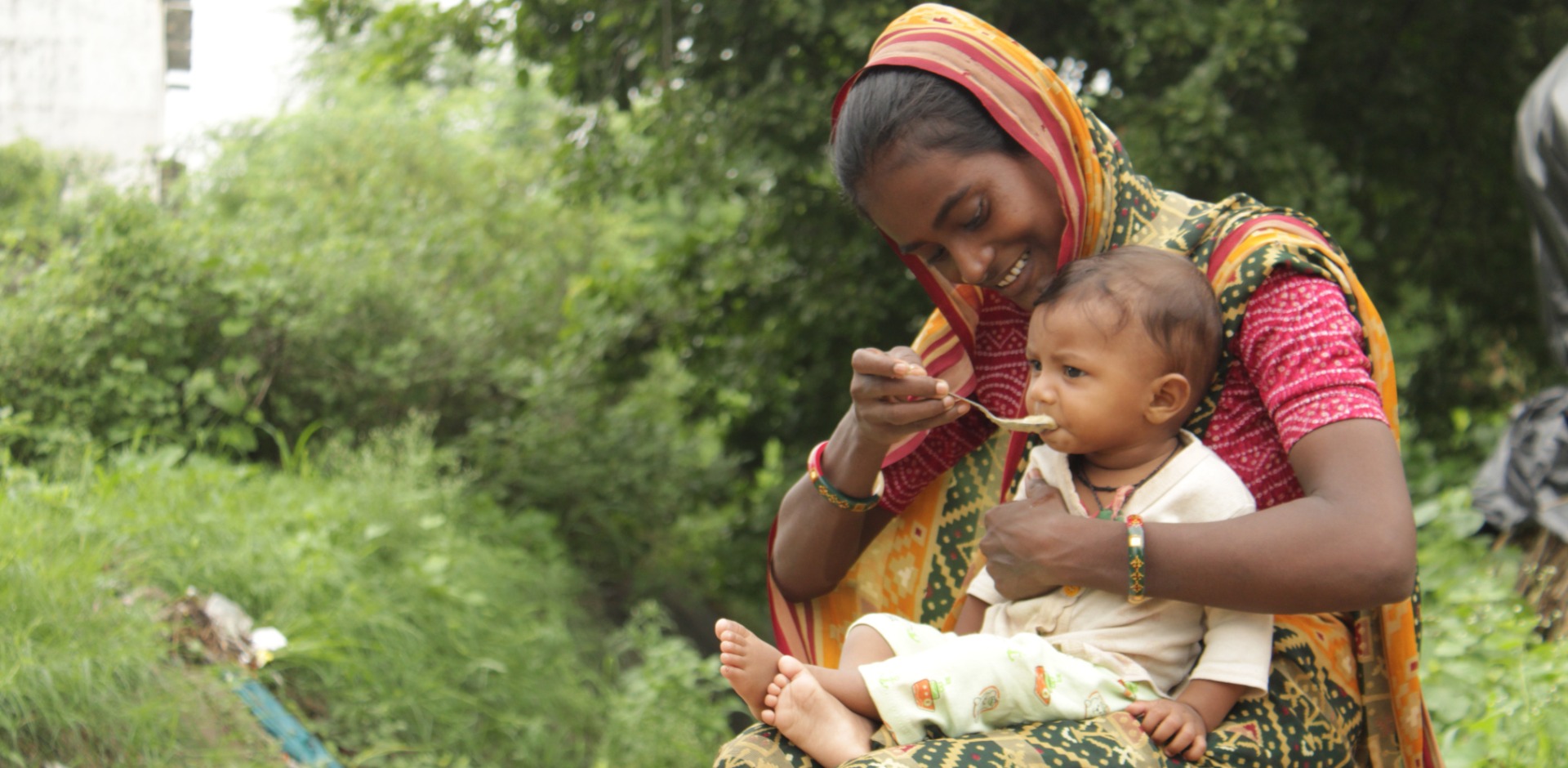
This Holiday Season, Give the Gift of Hope

Many people assume that when chronic hunger can’t be prevented, aid organizations like Action Against Hunger hand out food — and we sometimes do, particularly in emergencies. But there are many things that the image of an aid worker with a sack of grain doesn’t capture, including the fact that at some point, malnutrition stops being about food alone. It’s a public health issue.
When people are moderately malnourished, their bodies start to consume energy stores within their tissues — carbohydrates and fats and then proteins. Typically, the body shuts down the most metabolically intense functions first, like digestion, resulting in diarrhea — but this also makes it even harder for the body to process any nutrients it might receive.
In some cases, malnutrition can be deadly. Severely malnourished children often do not have an appetite for food and cannot handle a normal diet right away. It’s a widespread and dangerous condition, impacting 14 million children under five around the world. During treatment, children are given therapeutic milk formulas, ready-to-use therapeutic food, and other medical care to stimulate recovery. Still, even moderately malnourished children face health risks four times greater than their well-nourished peers.
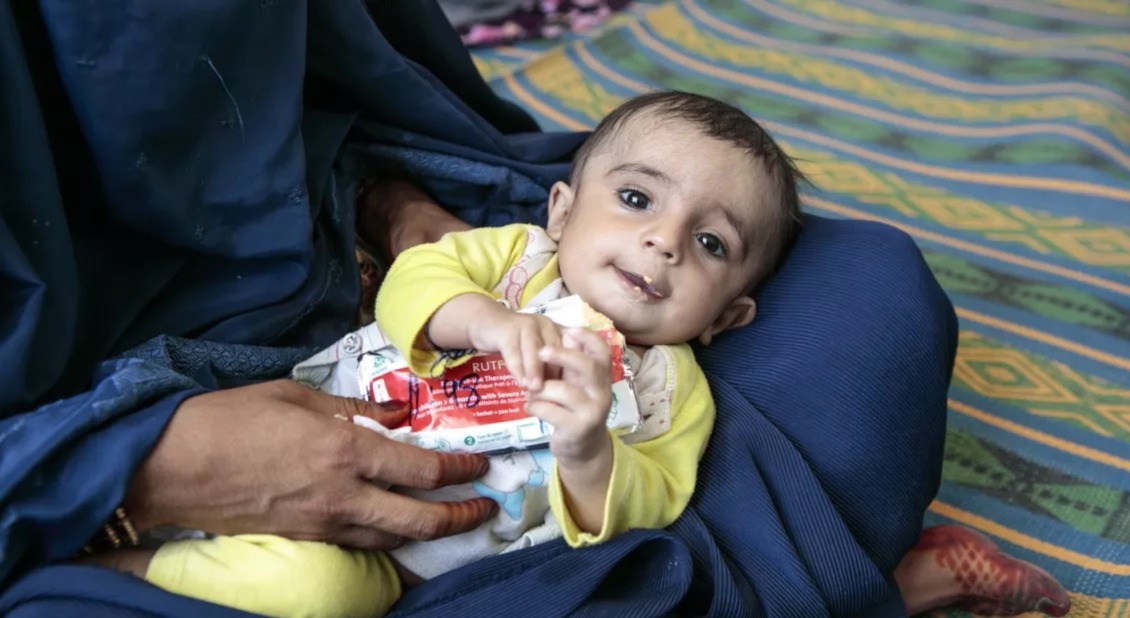
Last year, the World Health Organization (WHO) released the world’s first guidelines for managing the moderate malnutrition that impacts more than 31 million children. It’s noteworthy that the guidelines came not from a traditionally “food focused” agency, but the WHO. That’s because acute malnutrition is a medical issue that requires evidence-based care. In other words, hunger is a health issue.
Nutrition services are essential for ensuring children grow up healthy. Yet in too many places, families lack basic health services, including nutrition programs. Despite considerable progress, only 25% of acutely malnourished children have access to the treatment they need, which has a range of ripple effects.

Malnutrition can leave people even more vulnerable to the impacts of diseases like malaria, which is transmitted by mosquitoes, as well as diseases associated with unclean water, such as cholera, which also is on the rise in many parts of the world. Cholera spreads so rapidly that even one case is considered an epidemic. If it’s not treated, cholera can kill within hours. Cholera is most common in extremely poor places, where people are most likely to be malnourished and even more vulnerable to disease.
Every year, approximately two million children die of malnutrition’s devastating effects. Hunger is a public health crisis. It’s also a crisis we know how to solve. Treatment for malnutrition is effective in 90% of cases. So, why are mortality rates so distressingly high?
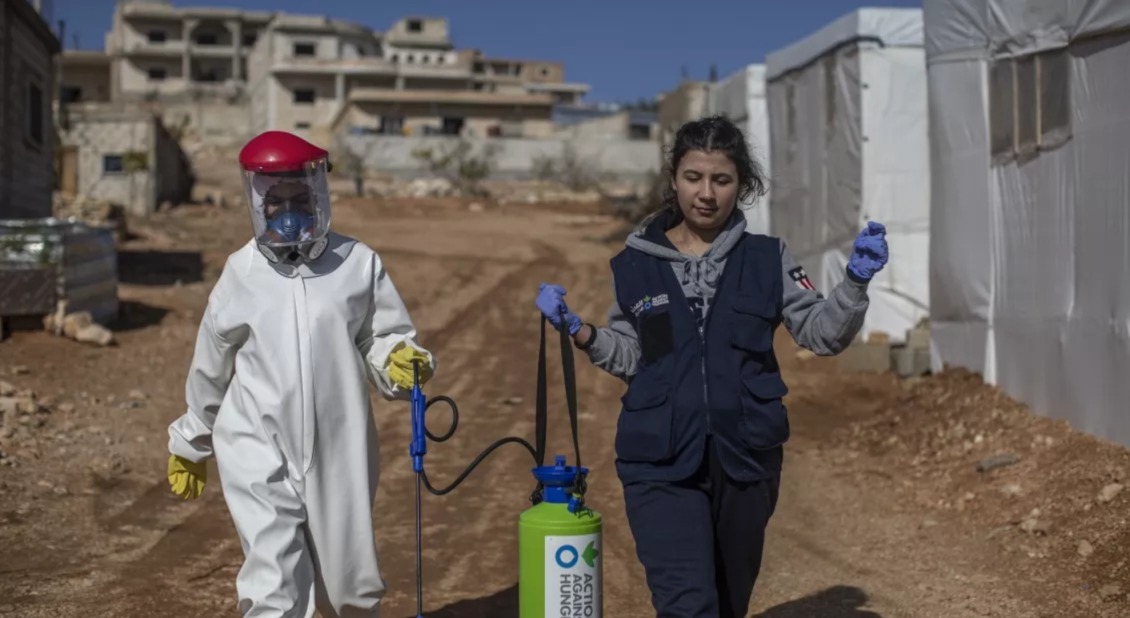
Through programs that involve everything from climate-smart agriculture to training in more lucrative livelihoods, we are working toward a world where food aid would only be needed temporarily, if at all—and then only after natural disasters that are hard to prevent or mitigate, such as last year’s earthquakes in Syria and Turkey.
Today, we’re far from that vision and the UN goal of zero hunger, for a few key reasons.

Conflicts such as the crisis in Gaza and the civil war in South Sudan disrupt food production and distribution as fields are burned or crops stolen, wells destroyed, markets bombed, and roads and ports blocked. Humanitarian workers are often targeted or prevented from reaching communities in need. More than 85% of people facing “crisis” levels of hunger (or worse) live in conflict-affected countries. That’s more than 260 million people in roughly 60 nations, making armed conflict the top driver of hunger around the world. The U.N. Security Council’s Resolution 2417 declares that hunger as a weapon may constitute a war crime. Despite this landmark action, there have been no prosecutions for “starvation crimes” and conflict-driven hunger has been on the rise.
The world has more than enough resources to ensure every life is well nourished. However, funding consistently falls short. This year, an Action Against Hunger analysis found that, even among countries facing crisis levels of hunger, only 35% of hunger-related funding requests were fulfilled — leaving a hunger funding gap of 65%. That’s up 23% from the prior year. It would take $8.86B to fully fund the hunger-related appeals of the 17 countries included in this year’s report, which is far less than half of what the American public bet on the Super Bowl.
It is hard to address hunger as a health issue in places where health systems are fragile or even non-functioning. In the short-term, there is often a need to support systems in crisis. Working longer term and partnering with communities and government authorities, we can harness and bolster local capacity by assessing six pillars of health systems and working to build on strengths and fill gaps in supplies, funding and know-how. Action Against Hunger advocates for governments to allocate at least 15% of total public spending to health and an additional 1% of GDP to primary healthcare, and help with budgeting and planning for more effective health systems.
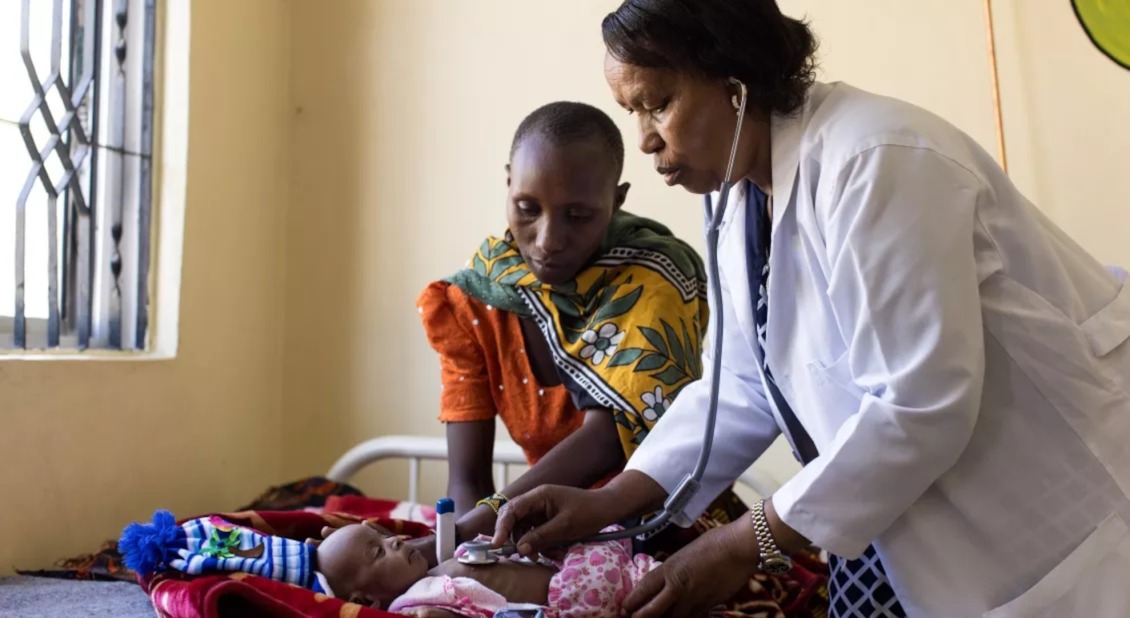
Existing tools can help address these interlocking challenges. We have pioneered evidence-based approaches that work. Now, we need the collective will to act.
During conflicts, UN members must prioritize preventing hunger, using their influence to hold warring parties accountable for violations of international law and guarantee safe delivery of humanitarian assistance. We need more funding, as well as funding that is flexible and long-term. As appeals for countries facing crisis go unmet, we must prioritize a cohesive approach to treating hunger. Malnutrition is only growing in places where funding does not extend and humanitarian aid does not reach. In crises like Sudan and Gaza, millions of people have been forcibly displaced and thus unable to reach basic emergency treatment — let alone integrated health services. It’s imperative to scale our network of community health workers, expand our scope, and reach the places that go unreached — from crowded displacement camps to villages miles from clean water sources.
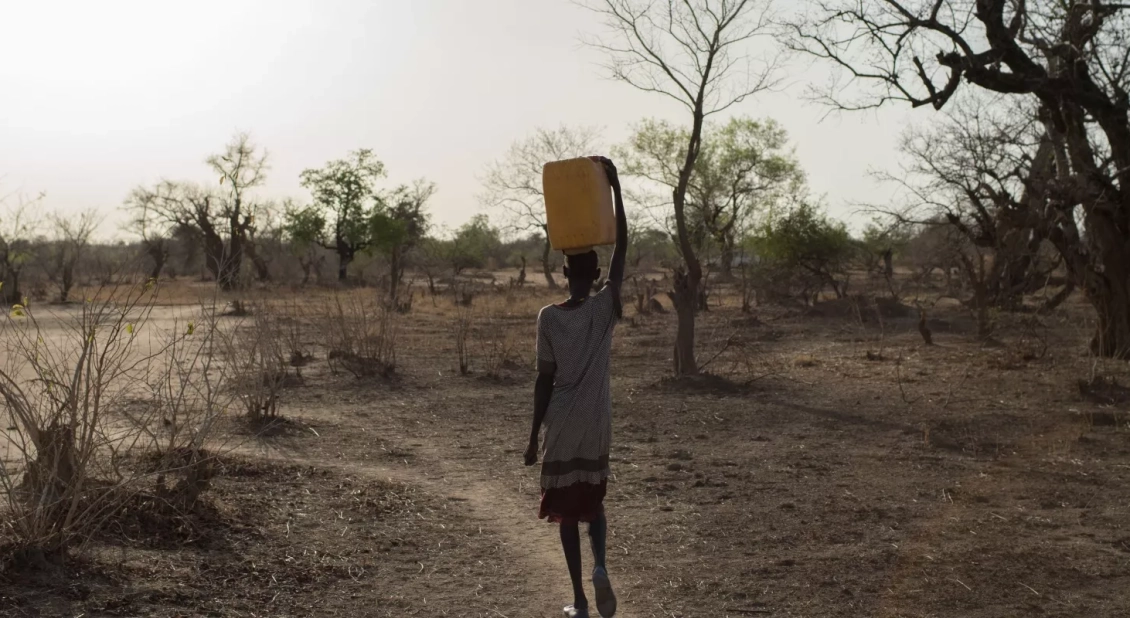
Funders also can enable resources to be used for evidence-based approaches to public health, which can involve policy interventions; expanded tools for tracking and analysis; greater community engagement; and additional research and innovation.
Every day, more and more people brave conflict and endure long treks in search of humanitarian stations. Before hunger forces people from their communities, we must address the source of the crisis. Adequate food is a human right. That’s why proactive action is essential, and so is adopting measures to maximize budgets and extend care to as many people as possible.
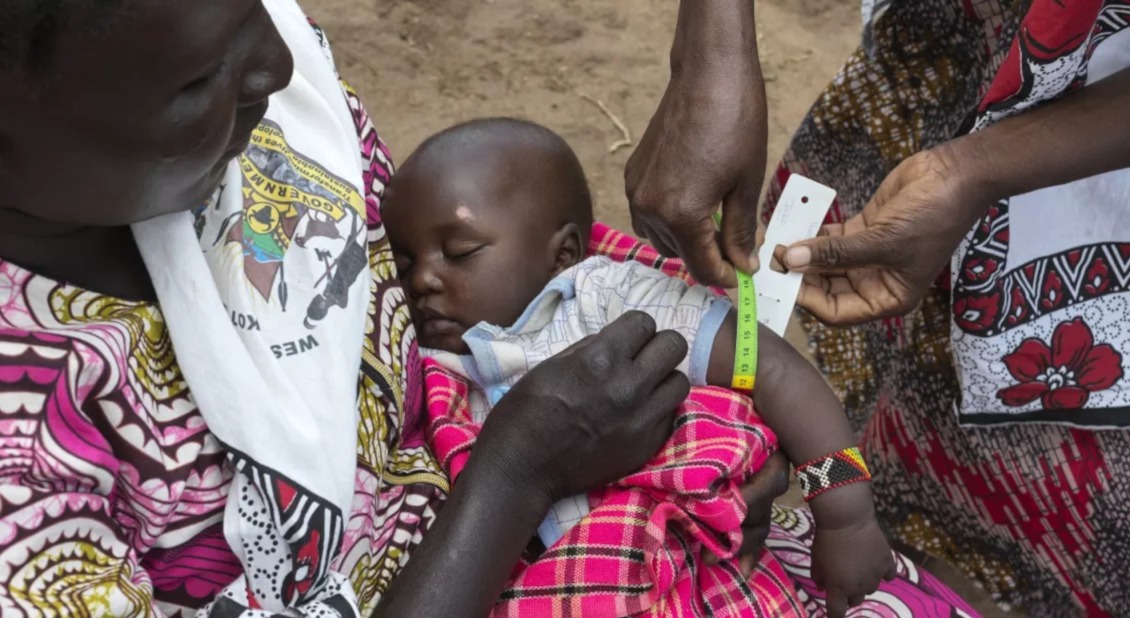
The hunger crisis is a health crisis. This World Health Month, we must rally all the tools at our disposal to address the issue like our lives depend on it, because for millions of people, they do.
Join our community of supporters passionate about ending world hunger.